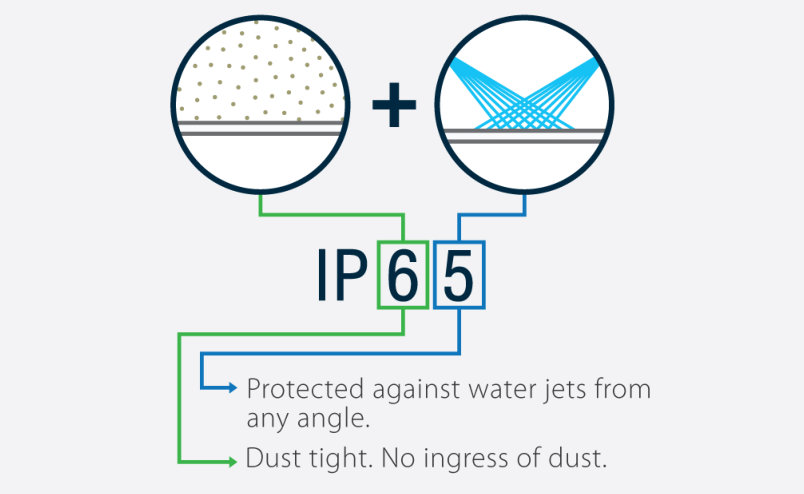
Ingress Protection Ratings
Posted 04-04-19
IP Ratings or Ingress Protection Ratings are a defined set of internationally approved standards that are used to identify the levels of sealing effectiveness of electrical components from foreign bodies. Foreign bodies can refer to tools, dust and various forms of moisture such as drips, sprays and immersions.
When planning your Life Protection systems, it is important that your designer considers the area that they are trying to protect and whether the need to use IP rating equipment may be required. For example, in areas such as woodworking workshops, a rating of IP65 would be recommended for call points due to the intensely dusty nature of the workspace. Similarly, where call-points are located outside, it may be suitable to consider IP67 to fully protect against water ingress in the event of poor weather.
How to identify an IP Rating
The number that follows IP each have a specific meaning. The first number refers to the level of protection (of people) from moving parts, as well as how protected the device is from dry foreign bodies such as dust and dirt. The second refers to the level of protection against moisture. The higher both numbers are, the greater the level of protection afforded.

First Digit (intrusion protection)
- No special protection
- Protection from a large part of the body such as a hand (but no protection from deliberate access); from solid objects greater than 50mm in diameter
- Protection against fingers or other object not greater than 80mm in length and 12mm in diameter
- Protection from entry by tools, wires etc, with a diameter of 2.5 mm or more
- Protection against solid bodies larger than 1mm (e.g. fine tools/small etc)
- Protected against dust that may harm equipment
- Totally dust tight
Second Digit (moisture protection)
- No protection
- Protection against condensation
- Protection against water droplets deflected up to 15° from vertical
- Protected against spray up to 60° from vertical
- Protected against water spray from all directions
- Protection against low pressure water jets (all directions)
- Protection against strong water jets and waves
- Protected against temporary immersion
- Protected against prolonged effects of immersion under pressure
Most Common IP Ratings
The most common IP ratings are probably 65, 66, 67 and 68. So for quick reference, these are defined below:
- IP65 Enclosure - IP rated as "dust tight" and protected against water projected from a nozzle
- IP66 Enclosure - IP rated as "dust tight" and protected against heavy seas or powerful jets of water
- IP67 Enclosure - IP rated as "dust tight" and protected against immersion
- IP68 Enclosure - IP rated as "dust tight" and protected against complete, continuous submersion in water



















